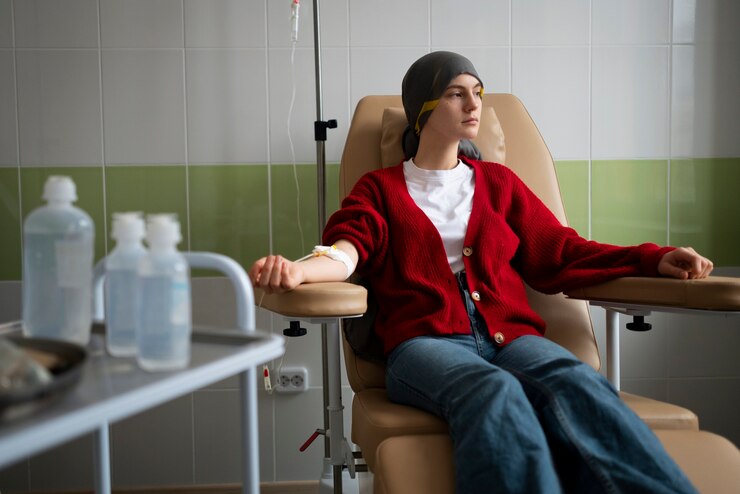Torn earlobes are a common concern that many people face, particularly those who wear heavy earrings or have experienced an accidental tear. Fortunately, torn earlobe repair is a simple and effective procedure that can restore the earlobe to its natural, youthful appearance. In this blog, we will explore the causes of torn earlobes, the procedure for repairing them, and what to expect during the recovery process.
Causes of Torn Earlobes
Earlobes شحمة الاذن are delicate and can be easily damaged due to a variety of factors. Some of the most common causes of torn earlobes include:
1. Heavy Earrings
Wearing heavy earrings or large jewelry can place significant strain on the earlobe over time. The weight of the earrings can cause the piercing hole to stretch and eventually tear. Chandeliers, hoops, and large studs are often the culprits when it comes to earlobe tears.
The longer you wear heavy earrings, the more likely the earlobe tissue is to become stretched and weakened, increasing the risk of a tear.
2. Accidental Trauma
Accidents can also lead to torn earlobes. Whether an earring gets caught on clothing or a child tugs on your ear, such incidents can lead to a partial or complete tear of the earlobe. Trauma to the earlobe can occur suddenly, leaving an unsightly tear that may require surgical intervention to repair.
3. Gauges and Stretching
While some individuals intentionally stretch their earlobes using gauges or piercing stretching techniques, it is possible for the earlobe to become too stretched over time. If the stretch becomes excessive, it can result in the tearing of the earlobe. This type of tear may also result from the removal of gauges after the piercing has been stretched too much, leaving the earlobe unable to return to its natural state.
4. Aging
As we age, the skin loses its elasticity, and the supporting tissue in the earlobes can begin to weaken. This gradual breakdown of tissue can lead to earlobe sagging and may increase the likelihood of tears, particularly if there is repeated trauma or stress on the ear.
The Procedure for Torn Earlobe Repair
Torn earlobe repair is a minimally invasive surgical procedure performed by a qualified cosmetic surgeon or dermatologist. The procedure typically takes less than an hour and involves the following steps:
1. Consultation and Assessment
The first step in the repair process is a thorough consultation with a surgeon, during which they will assess the severity of the tear and discuss the patient’s goals. The surgeon will also examine the surrounding tissue to ensure there is enough healthy skin for a successful repair.
2. Local Anesthesia
To ensure comfort, local anesthesia is applied to the earlobe area. This numbs the earlobe, allowing the patient to remain awake and relaxed throughout the procedure without feeling pain.
3. Surgical Repair
Once the area is numbed, the surgeon will carefully remove the damaged tissue and reshape the earlobe. If the tear is large, the surgeon may need to reconstruct the earlobe by stitching the edges of the tear together. In cases of severe damage, additional tissue may be used to repair the hole, creating a more natural, symmetrical appearance.
4. Stitching and Closing the Wound
After the tissue is adjusted, the surgeon will stitch the tear closed using fine sutures. These sutures are typically dissolvable, meaning they do not need to be removed later. The closure should be neat, ensuring that the earlobe retains its natural shape and function.
Recovery After Torn Earlobe Repair
The recovery process after torn earlobe repair is relatively straightforward. However, like any surgical procedure, proper aftercare is essential to achieving the best results.
1. Immediate Aftercare
After the surgery, patients are usually able to return home the same day. The earlobe may experience some swelling, bruising, or discomfort for the first few days, but these symptoms should gradually subside. The surgeon will provide instructions on how to care for the ear in the initial recovery period, including:
-
Keeping the area clean and dry.
-
Avoiding pressure on the repaired earlobe.
-
Applying antibiotic ointment as instructed.
2. Avoiding Earrings
Patients are advised to avoid wearing earrings in the repaired earlobe for at least 6 to 8 weeks, or until the ear has fully healed. Re-piercing can occur after the earlobe has healed completely, typically several months after the procedure.
3. Follow-Up Appointments
A follow-up appointment will be scheduled to monitor the healing process. The surgeon will assess the condition of the earlobe and ensure there are no complications, such as infection or improper healing.
4. Long-Term Care
As the earlobe heals, patients should continue to follow their surgeon’s advice on long-term care, which may include:
-
Avoiding heavy earrings to prevent the reoccurrence of tears.
-
Moisturizing the earlobe with gentle skincare products to promote elasticity.
-
Monitoring the area for signs of infection, such as redness, pain, or swelling.
Is Torn Earlobe Repair Right for You?
Torn earlobe repair is a suitable option for anyone who has experienced a torn earlobe due to heavy earrings, trauma, stretching, or aging. If you’re concerned about the appearance or function of your earlobes, surgical repair offers a quick and effective solution to restore your ears to their natural shape. The procedure is safe, minimally invasive, and provides long-lasting results.
Conclusion
Torn earlobes can be a source of frustration, but thanks to modern medical procedures, torn earlobe repair offers a simple and effective way to restore the appearance and function of your earlobes. Whether the tear is due to heavy earrings, accidental trauma, or aging, this procedure can help bring back the symmetry and beauty of your ears. If you’re considering earlobe repair, consult with a qualified cosmetic surgeon who can guide you through the process and ensure the best results.



